
谷歌 Pixel 9 评测--谷歌小型智能手机走错了路
告别最棒的相机套件
除了旗舰级 SoC 之外,小巧的 Pixel 9 还拥有令人印象深刻的更新交付时间以及超亮的 OLED 面板。在这篇关于 Pixel 手机的 Notebookcheck 评测中,您可以了解到它是否仍是千元以下智能手机的相机标杆。Marcus Herbrich, 👁 Daniel Schmidt (translated by DeepL / Ninh Duy) Published 🇺🇸 🇩🇪 ...
对谷歌 Pixel 9 的评价
在过去的几年里,谷歌的普通 Pixel 系列在所有的照片质量方面都成为了 "经济实惠 "的Android 智能手机的参照标准。该制造商再次将重点放在 Pixel 9 的摄像头上,也不是没有原因的。然而,自 Pixel 7 以来,其从中高档到高档的飞跃仅用了两代产品的时间。尽管 Pixel 9 依然拥有不俗的拍照性能,但不到 1000 美元的售价让竞争对手迅速迎头赶上。尤其是在变焦摄影方面,最新一代的 Pixel 令人失望,其主摄像头也没有比竞争对手的更好,如果有的话,那就是完全相反。
Pixel 9 的优势包括良好的照片质量、超长的运行时间、超亮的 OLED 显示屏和广泛的软件支持。我们还非常喜欢它的全新超声波指纹传感器。Galaxy S24 也具备这些优点,但三星手机的整体性能更好,而且还采用了高端 SoC。尤其是 Pixel 9 内置的 Tensor G4,丝毫不比高通和联发科的竞争对手逊色。此外,Pixel 9 缓慢的充电速度也不是购买这款手机的理由。与前代产品相比,我们希望它在这方面能有更明显的进步,更何况这款机型甚至没有配备电源。
那些对顶级手机感兴趣的人可以从小米 14 或 14T Pro 等手机中获得更强的性能和更快的充电时间。Oneplus 12 也是 Pixel 9 的不错替代品。
Pros
Cons
价格和供应情况
谷歌 Pixel 9 基础版的 MRSP 为 799 美元,可通过亚马逊等在线零售商购买。
潜在的竞争对手比较
Image | Model / Review | Geizhals | Weight | Drive | Display |
|---|---|---|---|---|---|
| Google Pixel 9 Google Tensor G4 ⎘ ARM Mali-G715 MP7 ⎘ 12 GB Memory, 128 GB | 198 g | 128 GB UFS 3.1 Flash | 6.30" 2424x1080 421 PPI OLED | ||
| Xiaomi 14 Qualcomm Snapdragon 8 Gen 3 ⎘ Qualcomm Adreno 750 ⎘ 12 GB Memory, 256 GB | 193 g | 256 GB UFS 4.0 Flash | 6.36" 2670x1200 460 PPI OLED | ||
| Samsung Galaxy S24 Samsung Exynos 2400 ⎘ Samsung Xclipse 940 ⎘ 8 GB Memory, 256 GB | 167 g | 256 GB UFS 4.0 Flash | 6.20" 2340x1080 416 PPI Dynamic AMOLED 2X | ||
| OnePlus 12 Qualcomm Snapdragon 8 Gen 3 ⎘ Qualcomm Adreno 750 ⎘ 16 GB Memory, 512 GB | 220 g | 512 GB UFS 4.0 Flash | 6.82" 3168x1440 510 PPI AMOLED | ||
| Google Pixel 8 Google Tensor G3 ⎘ ARM Mali-G715 MP7 ⎘ 8 GB Memory, 128 GB | 187 g | 128 GB UFS 3.1 Flash | 6.20" 2400x1080 424 PPI OLED |
Table of Contents
- 对谷歌 Pixel 9 的评价
- 外壳 - 通过 IP68 认证的 Pixel 9
- 连接性 - 配备 USB 3.2 接口的谷歌智能手机
- 软件 - Pixel 9 的 7 年更新
- 通信与全球导航卫星系统 - 配备 5G 技术的谷歌手机
- 电话功能和通话质量 - Pixel 9 支持 eSIM 卡
- 摄像头 - 配备光学防抖功能的谷歌智能手机
- 配件和保修 - Pixel 9 缺少一个电源供应器
- 输入设备和操作 - 配备面部解锁功能的谷歌手机
- 显示屏 - 谷歌 Pixel 9 采用 OLED 显示屏
- 性能--Pixel 9 内置的张量 SoC 存在缺陷
- 游戏 - Pixel 9 可以玩游戏
- 排放物 - 谷歌手机温度过低
- 电池续航时间 - Pixel 9 的充电速度仍然很慢
- Notebookcheck 总体评分
谷歌推出的第九代小型 Pixel 手机再次将小巧的尺寸与精选的功能完美结合,无需做出任何妥协。今年,Pixel 9 再次使用了 Pro 机型上的许多组件。谷歌 Pixel 9 的核心是全新的 张量 G4与去年的 SoC 相比,理论上只是小幅升级。 去年的 SoC.除此之外,很多方面都没有变化,改进似乎也很有限。不过,Pixel 8 的继任者拥有更多的 RAM(即 12 GB),电池容量也稍大,达到 4,700 mAh。
虽然事实证明,Pixel 9 代的升级幅度有限,而且谷歌去年已经大幅提高了价格,但进入 Pixel 世界的门槛再次大幅上调。基础版本的 Pixel 手机仍然是 128 GB,但现在的 MRSP 为 799 美元。存储容量为 256 GB 的 Pixel 9 版本现在已接近千元大关(MRSP:899 美元)。
» Notebookcheck多媒体笔记本电脑Top 10排名
» Notebookcheck游戏笔记本电脑Top 10排名
» Notebookcheck低价办公/商务笔记本电脑Top 10排名
» Notebookcheck高端办公/商务笔记本电脑Top 10排名
» Notebookcheck工作站笔记本电脑Top 10排名
» Notebookcheck亚笔记本电脑Top 10排名
» Notebookcheck超级本产品Top 10排名
» Notebookcheck变形本产品Top 10排名
» Notebookcheck平板电脑Top 10排名
» Notebookcheck智能手机Top 10排名
» Notebookcheck评测过最出色的笔记本电脑屏幕
» Notebookcheck售价500欧元以下笔记本电脑Top 10排名
» Notebookcheck售价300欧元以下笔记本电脑Top 10排名
外壳 - 通过 IP68 认证的 Pixel 9
与 2023 机型相比,Pixel 9 系列的外观略显圆润。 2023 机型略显圆润。此外,来自山景城的制造商还进一步开发了现在的标志性相机栏。即便如此,Pixel 9 依然散发着 Pixel 的基因。其在高端谷歌手机中闻名遐迩的良好制造质量以及 IP68 认证都没有改变。这意味着它的外壳可以完全防尘防水。
Pixel 9 有四种不同的颜色,相比之下 像素 8相比,其稍大的 6.3 英寸显示屏变得更宽更高了一些。另一方面,OLED 面板周围的边框变得更薄,从而使最新一代 Pixel 的屏幕与机身尺寸的比例得到改善,即 86.1%。即便如此,与其他制造商的紧凑型手机系列相比,Pixel 9 看起来并不是最现代的--S24、Pixel 9、Pixel 9 Plus、Pixel 9 Plus、Pixel 9 Plus 和 Pixel 9 Plus。 Galaxy S24为例,其屏占比(90.9%)要高得多。
设备的正面和背面都使用了大猩猩玻璃 Victus 2,与缎面金属边框相结合,手感很好,给人一种真正高品质的感觉。不过,这只是在远处欣赏 Pixel 9 时才会出现的情况,因为其光滑的背面在用户手中会变得非常容易沾染指纹。我们更倾向于使用 Pro 机型的磨砂玻璃。虽然彩色版的 Pixel 9 似乎比我们的黑色测试样机更不容易受到这个问题的影响。
连接性 - 配备 USB 3.2 接口的谷歌智能手机
Pixel 9 配备了 NFC 芯片,支持 Miracast 和 Google Cast。顶级 Pixel 手机的蓝牙标准仍然是 5.3 版本,因为 Tensor G4 在这方面似乎与前代产品的 SoC 没有区别。为了安全地存储用户数据和密码,Pixel 9 依赖于内部的 Titan M2 芯片,该芯片基于自由 CPU 指令集 RISC-V,可用作硬件安全模块(HSM)。Pixel 9 没有红外测温仪或 UWB 芯片。红外温度计也是 Pro 机型独有的。
我们测试样品的 UFS 3.1 存储容量为 128 GB,在手机交付状态下,用户有 109.5 GB 的可用空间。内部存储无法扩展,但由于有 USB OTG,你可以连接存储介质。在使用三星便携式固态硬盘 T7 时,我们只能通过技术上快速的 USB 标准(3.2 Gen 1)获得 184 Mbit/s的速度,该标准支持将有线图像输出到 HDMI 或 DisplayPort 接口。我们的三星 980 Pro 无法识别,这可能是由于连接的输出功率不够高。连接的存储介质可以使用 FAT、FAT32 或 exFAT 格式化。不过,谷歌手机不支持 NTFS。
软件 - Pixel 9 的 7 年更新
可持续性
谷歌不仅在手机的长更新周期上体现了其可持续发展意识,而且在生产过程中使用的材料上也体现了这一点。制造商没有提供确切的二氧化碳排放值,但表示产品重量的至少 20% 是由可回收材料制成的。其中回收铝(12%)所占比例最大。包装盒使用的材料是 100% 的可回收材料。交付给客户的 Pixel 9 包装也不含塑料。
通信与全球导航卫星系统 - 配备 5G 技术的谷歌手机
事实证明,Pixel 9 在无线标准方面面向未来--无论是在家中使用还是在外出时使用。它支持 Wi-Fi 7,包括 6 GHz WLAN,与华硕 ROG Rapture GT-AXE11000 参考路由器配合使用,传输速率非常高且稳定。
在移动互联网接入方面,这款谷歌手机支持 5G 和 4G 网络,并拥有广泛的频率覆盖范围。Pixel 9 的设置非常适合在德国使用,但用户在更远的地方也应该不会遇到连接问题。对 30 个 LTE 频段的支持几乎等同于全球手机。
| Networking | |
| Google Pixel 9 | |
| iperf3 receive AXE11000 | |
| iperf3 transmit AXE11000 | |
| iperf3 transmit AXE11000 6GHz | |
| iperf3 receive AXE11000 6GHz | |
| Xiaomi 14 | |
| iperf3 receive AXE11000 | |
| iperf3 transmit AXE11000 | |
| iperf3 transmit AXE11000 6GHz | |
| iperf3 receive AXE11000 6GHz | |
| Samsung Galaxy S24 | |
| iperf3 receive AXE11000 | |
| iperf3 transmit AXE11000 | |
| OnePlus 12 | |
| iperf3 receive AXE11000 | |
| iperf3 transmit AXE11000 | |
| Google Pixel 8 | |
| iperf3 receive AXE11000 | |
| iperf3 transmit AXE11000 | |
| iperf3 transmit AXE11000 6GHz | |
| iperf3 receive AXE11000 6GHz | |
| Average of class Smartphone | |
| iperf3 receive AXE11000 | |
| iperf3 transmit AXE11000 | |
| iperf3 transmit AXE11000 6GHz | |
| iperf3 receive AXE11000 6GHz | |
电话功能和通话质量 - Pixel 9 支持 eSIM 卡
摄像头 - 配备光学防抖功能的谷歌智能手机
另一方面,光圈为 f/1.7 的 5000 万像素主摄像头可拍摄出色彩自然的优质照片。在我们看来,1/1.31 英寸的传感器与谷歌的后期处理技术相结合,在照片质量方面是同类产品中最好的吗?Pixel 9 暴露出的缺点实在太多了。边缘明显模糊的现象尤为明显。虽然曝光效果不错,照片也没有人为增亮,但谷歌手机也容易 "吞没 "一些细节,例如湖边照片(测试照片 2)中一些房屋的屋顶瓦片。
弱光照片的照明效果不错,清晰度也不差。如果 Pixel 9 的价格还在Pixel 7 (MRSP:665 美元)的范围内,我们就没什么可批评的了,但对于一款 800 美元的手机来说,它在弱光下的柔焦效果相当明显。Galaxy S24 在这方面明显做得更好,尽管差异并不明显。
Pixel 可以 60fps 的速度录制超高清视频,但没有 8K 选项。另一方面,它的防抖和自动对焦功能非常出色。
在超广角摄像头方面,谷歌将前代产品的 1200 万像素镜头换成了 4800 万像素镜头,配备更大的 1/2.55 英寸传感器和更亮的 f/1.7 光圈。这使得 Pixel 9 的画质达到了顶级水平。谷歌手机的图像错误很少,动态范围也很好。不过,我们对其图像边缘的锐利度并不完全满意,有时竞争对手对细节的捕捉更胜一筹。
如果你愿意,可以使用众多 AI 功能进行后期处理。名为 Magic Editor 的智能图像和视频编辑功能可用于此目的。除其他功能外,它还可以更改照片背景或删除元素。添加我 "功能可确保使用增强现实技术多次录制合影,这样所有的人都会出现在一个镜头中。另一项新功能是 "最佳图像部分",这是为已拍摄的照片生成新图像部分的选项。您还可以使用生成式人工智能扩展照片。
Image comparison
Choose a scene and navigate within the first image. One click changes the position on touchscreens. One click on the zoomed-in image opens the original in a new window. The first image shows the scaled photograph of the test device.
Wide-angleWide-angleLow lightUltra-wide angle5x Zoom在可控的照明条件下,我们将主摄像头的色彩表现与实际参考色彩进行了对比分析。除了智能手机经常出现的变亮现象外,Pixel 9 在描绘 ColorChecker 通行证时没有出现任何重大偏差,白平衡也很稳定。只有在描绘青色时,这款高级手机才会出现色彩异常值(>10)。


配件和保修 - Pixel 9 缺少一个电源供应器
输入设备和操作 - 配备面部解锁功能的谷歌手机
安装的 160 毫米 Actua 全屏显示屏刷新率为 120 Hz,使网站上的动画和滚动看起来非常流畅。OLED 面板上的输入可以快速、准确地直接输入到触摸屏的边角。Pixel 手机内部的线性振动电机(Z 轴)也确保了愉悦的打字体验。
另一方面,按键的位置需要一些时间来适应--至少如果用户是从其他制造商的产品换到 Pixel 手机的话。这些按键采用了典型的谷歌排列方式,开/关机键位于音量摇杆上方。相比之下,Pixel 9 的指纹传感器几乎不需要适应。它首次采用了超声波技术,响应速度非常快。传感器的识别率也同样出色,而且位置很高。
前置摄像头利用面部数据提供生物识别安全功能。在光线良好的条件下,解锁速度也很快,但这种面部识别依赖于二维过程,安全性较低。
显示屏 - 谷歌 Pixel 9 采用 OLED 显示屏
Pixel 9 的 6.3 英寸 OLED 面板分辨率为 1080p,ppi 为 422,长宽比为 20:9。谷歌手机不支持根据显示内容调整动态刷新率;目前只有 Pro 机型受益于 LTPO 技术。面板运行频率仅为 60 Hz。另外,也可以通过选择 "平滑模式 "将刷新率调整为 120 Hz。
Pixel 9 在亮度方面表现出色。在我们的测量中,谷歌手机在激活环境光传感器并显示纯白色显示屏的情况下,亮度高达 2,063 cd/m²,几乎打破了记录。相比之下,它的光照是不均匀的,这对于 OLED 面板来说是非常不典型的。我们测量到,在显示明亮和黑暗区域(APL18 模式)时,亮度高达 2,844 cd/m²,而在 HDR 播放时,亮度高达 2,793 cd/m²。因此,我们的结果完全符合制造商的规格要求(最高 2,700 cd/m²)。
| |||||||||||||||||||||||||
Brightness Distribution: 84 %
Center on Battery: 2063 cd/m²
Contrast: ∞:1 (Black: 0 cd/m²)
ΔE ColorChecker Calman: 0.7 | ∀{0.5-29.43 Ø4.78}
ΔE Greyscale Calman: 1.2 | ∀{0.09-98 Ø5}
99% sRGB (Calman 2D)
Gamma: 2.23
CCT: 6524 K
| Google Pixel 9 OLED, 2424x1080, 6.3" | Xiaomi 14 OLED, 2670x1200, 6.4" | Samsung Galaxy S24 Dynamic AMOLED 2X, 2340x1080, 6.2" | OnePlus 12 AMOLED, 3168x1440, 6.8" | Google Pixel 8 OLED, 2400x1080, 6.2" | |
|---|---|---|---|---|---|
| Screen | -37% | -108% | -52% | -45% | |
| Brightness middle (cd/m²) | 2063 | 1043 -49% | 1349 -35% | 1026 -50% | 1450 -30% |
| Brightness (cd/m²) | 1914 | 1052 -45% | 1369 -28% | 991 -48% | 1410 -26% |
| Brightness Distribution (%) | 84 | 96 14% | 97 15% | 91 8% | 92 10% |
| Black Level * (cd/m²) | |||||
| Colorchecker dE 2000 * | 0.7 | 1.1 -57% | 3.3 -371% | 1.19 -70% | 1.1 -57% |
| Colorchecker dE 2000 max. * | 2.2 | 2.8 -27% | 5 -127% | 3.3 -50% | 4.2 -91% |
| Greyscale dE 2000 * | 1.2 | 1.9 -58% | 2.4 -100% | 2.4 -100% | 2.1 -75% |
| Gamma | 2.23 99% | 2.23 99% | 1.97 112% | 2.24 98% | 2.24 98% |
| CCT | 6524 100% | 6740 96% | 6635 98% | 6920 94% | 6584 99% |
| Color Space (Percent of sRGB) (%) | 99.5 |
* ... smaller is better
由于采用了 OLED 技术,谷歌依靠脉宽调制来控制屏幕亮度。不过,谷歌并没有采用像小米智能手机那样的 PWM 调光方式,而是采用了高频闪烁(3845 Hz)的 OLED 显示屏。在 Pixel 9 上,我们使用示波器测得的频率为 120 Hz,虽然很低,但很稳定。因此,对显示屏闪烁敏感的人应该会有怨言。超过 22% 的振幅偏差并不能改变这种情况--对于 120 Hz 的面板来说,低于 20% 的数值是最理想的。该值偏离 0% 的幅度越大,亮度控制的变化就越有可能引起负面注意。
Screen Flickering / PWM (Pulse-Width Modulation)
| Screen flickering / PWM detected | 120 Hz Amplitude: 22.22 % | ||
The display backlight flickers at 120 Hz (worst case, e.g., utilizing PWM) . The frequency of 120 Hz is very low, so the flickering may cause eyestrain and headaches after extended use. In comparison: 53 % of all tested devices do not use PWM to dim the display. If PWM was detected, an average of 8101 (minimum: 5 - maximum: 343500) Hz was measured. | |||
固定缩放级别和不同亮度设置下的测量系列(最低亮度下的振幅曲线看起来很平,但这是缩放造成的。信息框显示的是最小亮度下的振幅放大图)。
Display Response Times
| ↔ Response Time Black to White | ||
|---|---|---|
| 1.04 ms ... rise ↗ and fall ↘ combined | ↗ 0.5335 ms rise | |
| ↘ 0.502 ms fall | ||
| The screen shows very fast response rates in our tests and should be very well suited for fast-paced gaming. In comparison, all tested devices range from 0.1 (minimum) to 240 (maximum) ms. » 4 % of all devices are better. This means that the measured response time is better than the average of all tested devices (20.2 ms). | ||
| ↔ Response Time 50% Grey to 80% Grey | ||
| 1.55 ms ... rise ↗ and fall ↘ combined | ↗ 0.9135 ms rise | |
| ↘ 0.6375 ms fall | ||
| The screen shows very fast response rates in our tests and should be very well suited for fast-paced gaming. In comparison, all tested devices range from 0.165 (minimum) to 636 (maximum) ms. » 6 % of all devices are better. This means that the measured response time is better than the average of all tested devices (31.6 ms). | ||
性能--Pixel 9 内置的张量 SoC 存在缺陷
正如你对 Pixel 手机所期待的那样,它配备了一款 内置 SoC.根据制造商的说法,Tensor 芯片组是专门为优化人工智能性能而开发的。我们的人工智能基准测试也证实了这一点,这款手机的性能值很高。不过,就纯 CPU 性能而言,Pixel 9 在这个价格范围内显得相当一般。Tensor G4 甚至无法与当前的高端 SoC 相媲美,尤其是在 Geekbench 多核测试中。A 骁龙 8 代 3和 联发科 Dimensity 9300+要强大得多。
谷歌认为,自己的芯片组不应在基准测试中占主导地位,而应在日常可用性和用户体验方面表现出色。不过,我们也注意到 Pixel 9 在这方面略有不足。在我们的测试过程中,偶尔会出现(不可重现的)图形错误,例如在打开设置菜单时,只出现了一个没有内容的白色背景。谷歌手机加载复杂应用程序(如游戏)的时间也比小米 14T Pro 长一秒。 小米 14T Pro.
| CrossMark - Overall | |
| OnePlus 12 | |
| Samsung Galaxy S24 | |
| Xiaomi 14 | |
| Average of class Smartphone (187 - 2674, n=123, last 2 years) | |
| Average Google Tensor G4 (951 - 1102, n=4) | |
| Google Pixel 8 | |
| Google Pixel 9 | |
| UL Procyon AI Inference for Android - Overall Score NNAPI | |
| Average Google Tensor G4 (35227 - 42062, n=5) | |
| Google Pixel 9 | |
| Google Pixel 8 | |
| Average of class Smartphone (3769 - 81594, n=135, last 2 years) | |
| Xiaomi 14 | |
| OnePlus 12 | |
| Samsung Galaxy S24 | |
| AImark - Score v3.x | |
| Average of class Smartphone (82 - 307528, n=122, last 2 years) | |
| OnePlus 12 | |
| Xiaomi 14 | |
| Google Pixel 8 | |
| Samsung Galaxy S24 | |
| Average Google Tensor G4 (690 - 1434, n=5) | |
| Google Pixel 9 | |
| Geekbench AI | |
| Single Precision TensorFlow NNAPI 1.1 | |
| Google Pixel 9 | |
| Average of class Smartphone (122 - 4122, n=39, last 2 years) | |
| Average Google Tensor G4 (376 - 771, n=4) | |
| OnePlus 12 | |
| Xiaomi 14 | |
| Samsung Galaxy S24 | |
| Half Precision TensorFlow NNAPI 1.1 | |
| Google Pixel 9 | |
| Average Google Tensor G4 (4176 - 4754, n=4) | |
| Average of class Smartphone (122 - 32120, n=39, last 2 years) | |
| OnePlus 12 | |
| Samsung Galaxy S24 | |
| Xiaomi 14 | |
| Quantized TensorFlow NNAPI 1.1 | |
| Google Pixel 9 | |
| Average Google Tensor G4 (6269 - 6451, n=4) | |
| Average of class Smartphone (118 - 44381, n=39, last 2 years) | |
| OnePlus 12 | |
| Samsung Galaxy S24 | |
| Xiaomi 14 | |
在图形处理器性能方面,ARM Mali-G715 MP7 ARM Mali-G715 MP7之间的差距变得更大,甚至比 CPU 测试中的差距更加明显。有时 小米 14在 GFXBench 中的表现比谷歌手机高出 50%。
GFXBench (DX / GLBenchmark) 2.7: T-Rex Onscreen | 1920x1080 T-Rex Offscreen
GFXBench 3.0: on screen Manhattan Onscreen OGL | 1920x1080 1080p Manhattan Offscreen
GFXBench 3.1: on screen Manhattan ES 3.1 Onscreen | 1920x1080 Manhattan ES 3.1 Offscreen
GFXBench: on screen Car Chase Onscreen | 1920x1080 Car Chase Offscreen | on screen Aztec Ruins High Tier Onscreen | 2560x1440 Aztec Ruins High Tier Offscreen | on screen Aztec Ruins Normal Tier Onscreen | 1920x1080 Aztec Ruins Normal Tier Offscreen | 3840x2160 4K Aztec Ruins High Tier Offscreen
| 3DMark / Wild Life Extreme Unlimited | |
| Xiaomi 14 | |
| OnePlus 12 | |
| Samsung Galaxy S24 | |
| Google Pixel 9 | |
| Google Pixel 8 | |
| 3DMark / Wild Life Extreme | |
| Xiaomi 14 | |
| OnePlus 12 | |
| Samsung Galaxy S24 | |
| Google Pixel 9 | |
| Google Pixel 8 | |
| 3DMark / Wild Life Unlimited Score | |
| Xiaomi 14 | |
| OnePlus 12 | |
| Samsung Galaxy S24 | |
| Google Pixel 9 | |
| Google Pixel 8 | |
| 3DMark / Wild Life Score | |
| Google Pixel 9 | |
| Google Pixel 8 | |
| Xiaomi 14 | |
| 3DMark / Solar Bay Score | |
| Xiaomi 14 | |
| OnePlus 12 | |
| Samsung Galaxy S24 | |
| Google Pixel 9 | |
| 3DMark / Solar Bay Unlimited Score | |
| Xiaomi 14 | |
| OnePlus 12 | |
| Samsung Galaxy S24 | |
| 3DMark / Steel Nomad Light Unlimited Score | |
| OnePlus 12 | |
| Google Pixel 9 | |
| 3DMark / Steel Nomad Light Score | |
| OnePlus 12 | |
| Google Pixel 9 | |
| GFXBench (DX / GLBenchmark) 2.7 / T-Rex Onscreen | |
| Xiaomi 14 | |
| Google Pixel 8 | |
| Google Pixel 9 | |
| Samsung Galaxy S24 | |
| OnePlus 12 | |
| GFXBench (DX / GLBenchmark) 2.7 / T-Rex Offscreen | |
| OnePlus 12 | |
| Xiaomi 14 | |
| Google Pixel 9 | |
| Samsung Galaxy S24 | |
| Google Pixel 8 | |
| GFXBench 3.0 / Manhattan Onscreen OGL | |
| Xiaomi 14 | |
| Google Pixel 9 | |
| Samsung Galaxy S24 | |
| Google Pixel 8 | |
| OnePlus 12 | |
| GFXBench 3.0 / 1080p Manhattan Offscreen | |
| Xiaomi 14 | |
| OnePlus 12 | |
| Samsung Galaxy S24 | |
| Google Pixel 9 | |
| Google Pixel 8 | |
| GFXBench 3.1 / Manhattan ES 3.1 Onscreen | |
| Xiaomi 14 | |
| Samsung Galaxy S24 | |
| Google Pixel 9 | |
| Google Pixel 8 | |
| OnePlus 12 | |
| GFXBench 3.1 / Manhattan ES 3.1 Offscreen | |
| Xiaomi 14 | |
| OnePlus 12 | |
| Samsung Galaxy S24 | |
| Google Pixel 9 | |
| Google Pixel 8 | |
| GFXBench / Car Chase Onscreen | |
| Xiaomi 14 | |
| Samsung Galaxy S24 | |
| Google Pixel 9 | |
| OnePlus 12 | |
| Google Pixel 8 | |
| GFXBench / Car Chase Offscreen | |
| Xiaomi 14 | |
| OnePlus 12 | |
| Samsung Galaxy S24 | |
| Google Pixel 9 | |
| Google Pixel 8 | |
| GFXBench / Aztec Ruins High Tier Onscreen | |
| Samsung Galaxy S24 | |
| Xiaomi 14 | |
| Google Pixel 9 | |
| OnePlus 12 | |
| Google Pixel 8 | |
| GFXBench / Aztec Ruins High Tier Offscreen | |
| Xiaomi 14 | |
| OnePlus 12 | |
| Samsung Galaxy S24 | |
| Google Pixel 9 | |
| Google Pixel 8 | |
| GFXBench / Aztec Ruins Normal Tier Onscreen | |
| Xiaomi 14 | |
| Samsung Galaxy S24 | |
| Google Pixel 9 | |
| Google Pixel 8 | |
| OnePlus 12 | |
| GFXBench / Aztec Ruins Normal Tier Offscreen | |
| Xiaomi 14 | |
| OnePlus 12 | |
| Samsung Galaxy S24 | |
| Google Pixel 9 | |
| Google Pixel 8 | |
| GFXBench / 4K Aztec Ruins High Tier Offscreen | |
| Xiaomi 14 | |
| OnePlus 12 | |
| Samsung Galaxy S24 | |
| Google Pixel 9 | |
| Google Pixel 8 | |
由于 Pixel 9 的计算能力在同类产品中是最低的,因此谷歌的顶级设备在浏览器基准测试中没有取得第一名的成绩也就不足为奇了。主观而言,浏览速度仍然很快,没有明显的延迟。
| Jetstream 2 - 2.0 Total Score | |
| Xiaomi 14 (Chrome 120.0.6099.210) | |
| OnePlus 12 (Chrome 126) | |
| Average of class Smartphone (23.8 - 387, n=149, last 2 years) | |
| Samsung Galaxy S24 (Chrome 122) | |
| Average Google Tensor G4 (102 - 166, n=5) | |
| Google Pixel 9 (Chrome 129) | |
| Google Pixel 8 (chrome 116) | |
| Speedometer 2.0 - Result 2.0 | |
| OnePlus 12 (Chrome 126) | |
| Samsung Galaxy S24 (Chrome 122) | |
| Xiaomi 14 (Chrome 120.0.6099.210) | |
| Average of class Smartphone (15.2 - 643, n=122, last 2 years) | |
| Average Google Tensor G4 (182 - 302, n=5) | |
| Google Pixel 9 (Chrome 129) | |
| Google Pixel 8 (chrome 116) | |
| Speedometer 3 - Score 3.0 | |
| Average Google Tensor G4 (14.7 - 18.6, n=5) | |
| OnePlus 12 (Chrome 126) | |
| Google Pixel 9 (Chrome 129) | |
| Average of class Smartphone (1.03 - 42.8, n=124, last 2 years) | |
| Xiaomi 14 (Chrome 122) | |
| Google Pixel 8 (Chrome 122) | |
| WebXPRT 4 - Overall | |
| OnePlus 12 (Chrome 126) | |
| Xiaomi 14 (Chrome 120.0.6099.210) | |
| Samsung Galaxy S24 (Chrome 122) | |
| Average of class Smartphone (27 - 306, n=145, last 2 years) | |
| Average Google Tensor G4 (90 - 151, n=5) | |
| Google Pixel 9 (Chrome 129) | |
| Google Pixel 8 (chrome 116) | |
| Octane V2 - Total Score | |
| Xiaomi 14 (Chrome 120.0.6099.210) | |
| OnePlus 12 (Chrome 126) | |
| Samsung Galaxy S24 (Chrome 122) | |
| Average Google Tensor G4 (52224 - 62374, n=5) | |
| Google Pixel 9 | |
| Average of class Smartphone (2228 - 121337, n=197, last 2 years) | |
| Google Pixel 8 (chrome 116) | |
| Mozilla Kraken 1.1 - Total | |
| Average of class Smartphone (257 - 28190, n=154, last 2 years) | |
| Google Pixel 8 (chrome 116) | |
| Average Google Tensor G4 (570 - 1081, n=5) | |
| Google Pixel 9 (Chrome 129) | |
| Samsung Galaxy S24 (Chrome 122) | |
| OnePlus 12 (Chrome 126) | |
| Xiaomi 14 (Chrome 120.0.6099.210) | |
* ... smaller is better
Pixel 9 在存储连接性方面给人带来了惊喜--但不幸的是,它又是以一种相当负面的方式出现的。这款谷歌手机(很可能)仍然采用 UFS 3.1 标准--谷歌尚未提供确切细节。它的读取率与前代 前代但 Pixel 9 的写入速度极低。读取速度低的原因可能是 Tensor SoC 的内存控制器造成的,但这不可能是写入速度低的原因。
| Google Pixel 9 | Xiaomi 14 | Samsung Galaxy S24 | OnePlus 12 | Google Pixel 8 | Average 128 GB UFS 3.1 Flash | Average of class Smartphone | |
|---|---|---|---|---|---|---|---|
| AndroBench 3-5 | 339% | 156% | 378% | 59% | 49% | 180% | |
| Sequential Read 256KB (MB/s) | 1584.56 | 3385.74 114% | 3701.23 134% | 3297.57 108% | 1655.48 4% | 1569 ? -1% | 2228 ? 41% |
| Sequential Write 256KB (MB/s) | 256.48 | 2906.65 1033% | 1435.39 460% | 3246.21 1166% | 895.86 249% | 768 ? 199% | 1852 ? 622% |
| Random Read 4KB (MB/s) | 226.41 | 420.99 86% | 373.12 65% | 438.5 94% | 183.55 -19% | 244 ? 8% | 296 ? 31% |
| Random Write 4KB (MB/s) | 266.19 | 594.78 123% | 175.98 -34% | 652.8 145% | 266.68 0% | 243 ? -9% | 339 ? 27% |
游戏 - Pixel 9 可以玩游戏
我们在使用GameBench 应用程序记录帧速率时遇到的问题这几乎是 Pixel 手机的传统。不过,在谷歌手机上玩游戏还是很有可能的。我们测试的Android 游戏运行流畅,没有任何明显的问题。即使是图形要求较高的《源氏冲击》,在高图形设置下也能运行良好--可以激活Android 上的最高 60fps。游戏《PUBG Mobile》可以激活 UHD 模式,甚至在低细节下也能达到 "极限 "帧率。这在理论上应该可以达到 90fps。由于 Mali-G715 MP7在 Pixel 9 中不支持光线追踪,因此它在游戏方面的前景值得怀疑。
一旦我们解决了录制过程中的问题,我们将提供 Pixel 9 的准确帧率。
排放物 - 谷歌手机温度过低
温度
Pixel 9 的机箱表面温度一直处于可控范围内;在使用 Burnout 基准的负载情况下,我们测得的废热约为 43 摄氏度,相当低。不过,在 3DMark 压力测试中,这导致系统性能适度下降了约 20% 至 30%。
(±) The maximum temperature on the upper side is 43.2 °C / 110 F, compared to the average of 35.2 °C / 95 F, ranging from 21.9 to 247 °C for the class Smartphone.
(±) The bottom heats up to a maximum of 41.3 °C / 106 F, compared to the average of 34 °C / 93 F
(+) In idle usage, the average temperature for the upper side is 25.7 °C / 78 F, compared to the device average of 32.9 °C / 91 F.
3DMark Steel Nomad Stress Test
| 3DMark | |
| Wild Life Stress Test Stability | |
| Samsung Galaxy S24 | |
| Google Pixel 9 | |
| Wild Life Extreme Stress Test | |
| Google Pixel 9 | |
| Samsung Galaxy S24 | |
| Steel Nomad Light Stress Test Stability | |
| Google Pixel 9 | |
发言人
Pixel 9 使用两个扬声器,其中一个位于耳罩内侧,因此没有等效的立体声。声音相当饱满,但粉红噪声测量中的阶梯形频率曲线并不理想。对于一款设计紧凑的智能手机来说,谷歌手机的低音和重低音都很清晰。
如果你想要外部声音输出,可以使用有线 USB 端口或无线蓝牙 5.3。后者依赖于大量的编解码器。
Google Pixel 9 audio analysis
(+) | speakers can play relatively loud (87.7 dB)
Bass 100 - 315 Hz
(-) | nearly no bass - on average 23.9% lower than median
(±) | linearity of bass is average (10.1% delta to prev. frequency)
Mids 400 - 2000 Hz
(+) | balanced mids - only 3.2% away from median
(+) | mids are linear (6.7% delta to prev. frequency)
Highs 2 - 16 kHz
(+) | balanced highs - only 4.4% away from median
(+) | highs are linear (4.9% delta to prev. frequency)
Overall 100 - 16.000 Hz
(±) | linearity of overall sound is average (15.6% difference to median)
Compared to same class
» 4% of all tested devices in this class were better, 3% similar, 93% worse
» The best had a delta of 11%, average was 35%, worst was 134%
Compared to all devices tested
» 23% of all tested devices were better, 4% similar, 73% worse
» The best had a delta of 4%, average was 24%, worst was 134%
Google Pixel 8 audio analysis
(+) | speakers can play relatively loud (89 dB)
Bass 100 - 315 Hz
(-) | nearly no bass - on average 26.8% lower than median
(+) | bass is linear (6.2% delta to prev. frequency)
Mids 400 - 2000 Hz
(+) | balanced mids - only 4.2% away from median
(+) | mids are linear (5.4% delta to prev. frequency)
Highs 2 - 16 kHz
(+) | balanced highs - only 4% away from median
(+) | highs are linear (3.3% delta to prev. frequency)
Overall 100 - 16.000 Hz
(±) | linearity of overall sound is average (16.2% difference to median)
Compared to same class
» 6% of all tested devices in this class were better, 5% similar, 90% worse
» The best had a delta of 11%, average was 35%, worst was 134%
Compared to all devices tested
» 25% of all tested devices were better, 5% similar, 69% worse
» The best had a delta of 4%, average was 24%, worst was 134%
电池续航时间 - Pixel 9 的充电速度仍然很慢
耗电量
Pixel 9 在负载和空闲模式下的功耗都不高。闲置模式下的功耗接近 1.5 瓦,当然仍有一定的优化空间,尽管其明亮的显示屏会在这方面做出重大贡献。
它的电池容量为 4,700 毫安时,使用数据线充电时的功率可达 27 瓦。这已经不算快了,但如果没有合适的电源装置,日常使用时充电功率可能会更低。制造商没有说明 Pixel 9 支持哪些标准;在我们的测试中,我们使用一个电源箱(PD 3.0,最大功率 100 瓦)为电池充电大约需要 2 个小时。我们试用了三种不同的电源适配器(功率在 18 瓦到 30 瓦之间),结果发现 Pixel 9 几乎需要连接电源 3 个小时。不过,我们无法测试它在使用谷歌原装电源时的表现。使用 Qi 标准进行无线充电的功率可达 15 瓦。
| Off / Standby | |
| Idle | |
| Load |
|
Key:
min: | |
| Google Pixel 9 4700 mAh | Xiaomi 14 4610 mAh | Samsung Galaxy S24 4000 mAh | OnePlus 12 5400 mAh | Google Pixel 8 4575 mAh | Average Google Tensor G4 | Average of class Smartphone | |
|---|---|---|---|---|---|---|---|
| Power Consumption | 27% | 2% | -7% | 23% | -14% | 4% | |
| Idle Minimum * (Watt) | 0.66 | 0.51 23% | 0.42 36% | 1.3 -97% | 0.56 15% | 0.744 ? -13% | 0.842 ? -28% |
| Idle Average * (Watt) | 1.49 | 0.89 40% | 0.93 38% | 0.95 36% | 1.08 28% | 1.894 ? -27% | 1.439 ? 3% |
| Idle Maximum * (Watt) | 1.78 | 0.92 48% | 1.07 40% | 1.12 37% | 1.17 34% | 2.11 ? -19% | 1.624 ? 9% |
| Load Average * (Watt) | 7.44 | 9.08 -22% | 15.43 -107% | 10.55 -42% | 8.01 -8% | 7.42 ? -0% | 7.03 ? 6% |
| Load Maximum * (Watt) | 16.64 | 9.11 45% | 16.51 1% | 11.72 30% | 8.89 47% | 18.5 ? -11% | 11.3 ? 32% |
* ... smaller is better
Power consumption: Geekbench (150 cd/m²)
Power consumption: GFXBench (150 cd/m²)
运行时间
作为一款紧凑型智能手机,Pixel 9 的运行时间非常出色。在调整显示屏亮度(150 cd/m²)的情况下,可以进行最佳比较。在这种情况下,谷歌手机的续航时间比其前代产品延长了三个小时。 前代产品在使用 Wi-Fi 上网时。实际上,我们的测试设备在无 Wi-Fi 无休止播放视频时的续航时间更长,但 Pixel 9 是个例外,它的续航时间约为 16 小时。
| Google Pixel 9 4700 mAh | Xiaomi 14 4610 mAh | Samsung Galaxy S24 4000 mAh | OnePlus 12 5400 mAh | Google Pixel 8 4575 mAh | |
|---|---|---|---|---|---|
| Battery runtime | 35% | -1% | 35% | -5% | |
| Reader / Idle (h) | 35 | 48.8 39% | 40 14% | 32.8 -6% | 24.9 -29% |
| H.264 (h) | 16.3 | 27.9 71% | 20.5 26% | 30.3 86% | 22.7 39% |
| WiFi v1.3 (h) | 16.5 | 18.2 10% | 14.7 -11% | 20.6 25% | 13.6 -18% |
| Load (h) | 3.9 | 4.6 18% | 2.7 -31% | 3.4 -13% |
Notebookcheck 总体评分
如果您正在寻找一款可能经久耐用的日常伴侣,并始终希望使用最新的软件,那么 Pixel 9 可能就是您的高品质高端手机。
Google Pixel 9
- 10/23/2024 v8
Marcus Herbrich
Transparency
The selection of devices to be reviewed is made by our editorial team. The test sample was provided to the author as a loan by the manufacturer or retailer for the purpose of this review. The lender had no influence on this review, nor did the manufacturer receive a copy of this review before publication. There was no obligation to publish this review. As an independent media company, Notebookcheck is not subjected to the authority of manufacturers, retailers or publishers.
This is how Notebookcheck is testing
Every year, Notebookcheck independently reviews hundreds of laptops and smartphones using standardized procedures to ensure that all results are comparable. We have continuously developed our test methods for around 20 years and set industry standards in the process. In our test labs, high-quality measuring equipment is utilized by experienced technicians and editors. These tests involve a multi-stage validation process. Our complex rating system is based on hundreds of well-founded measurements and benchmarks, which maintains objectivity. Further information on our test methods can be found here.









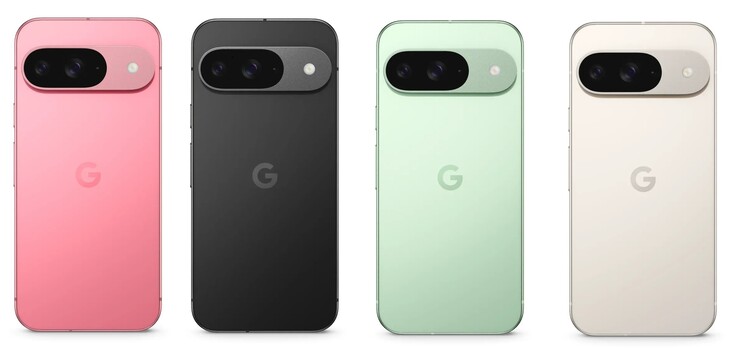
















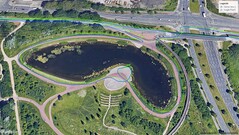













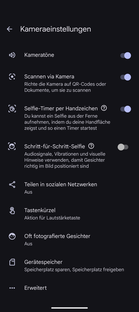
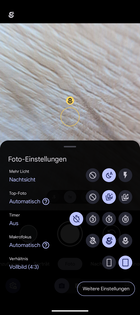



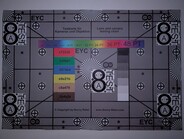















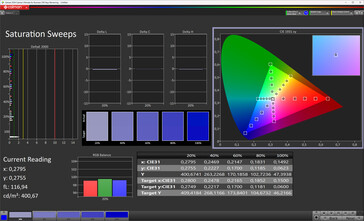


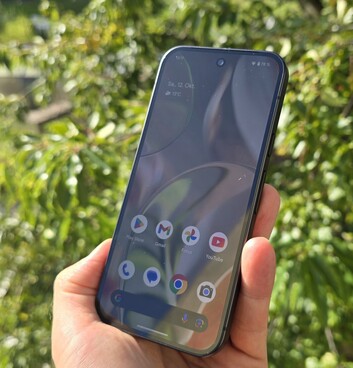







 Total Sustainability Score:
Total Sustainability Score: 
